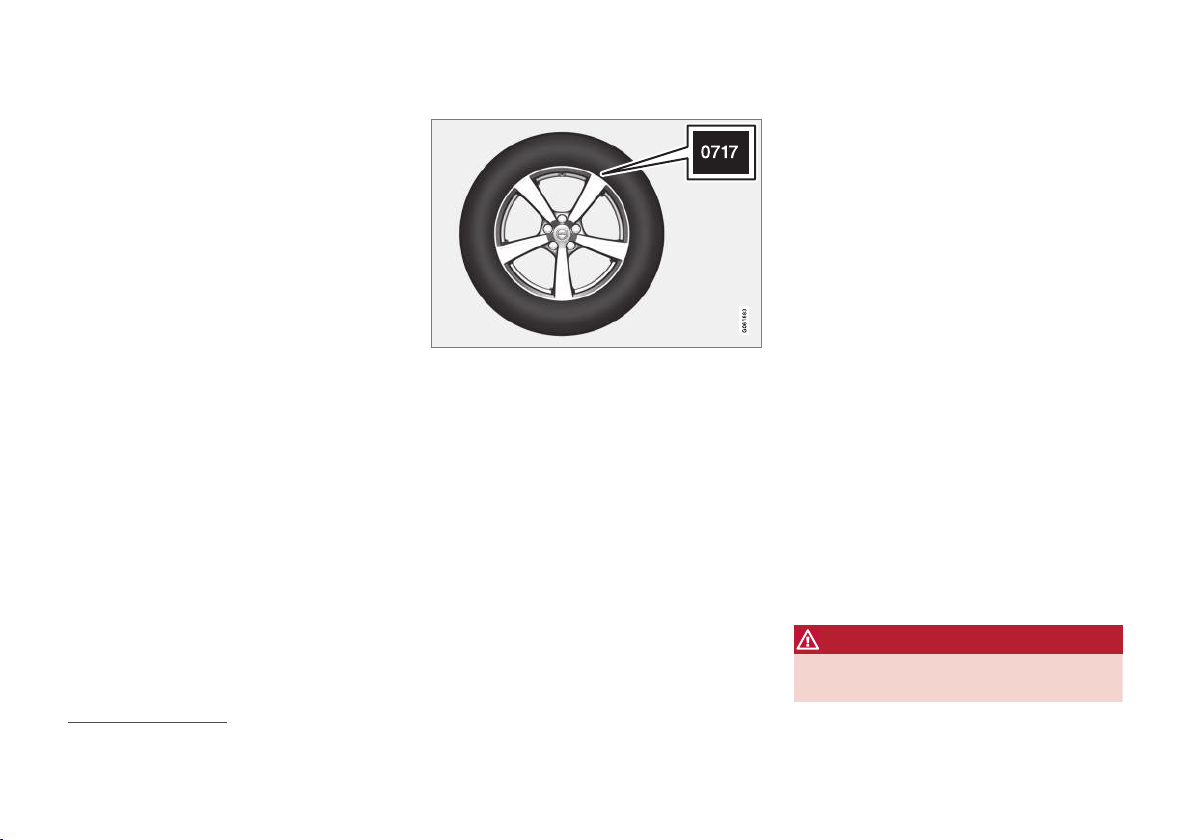Loading ...
Loading ...
Loading ...

WHEELS AND TYRES
504
Tyres
Amongst other things, the function of the tyres is
to carry load, provide grip on the road surface,
dampen vibration and protect the wheel from
wear.
The tyres greatly affect the car's driving characte-
ristics. The type of tyre, dimensions, tyre pressure
and speed rating are important for how the car
performs.
Recommended tyres
On delivery, the car is equipped with Volvo origi-
nal tyres that have the VOL
1
marking on the side
of the tyres. These tyres are carefully adapted to
the car. In the event of changing tyres, it is there-
fore important that the new tyres also have this
marking in order for the car's driving characteris-
tics, comfort and fuel consumption to be main-
tained.
New tyres
Tyres are perishable. After a few years they begin
to harden at the same time as the friction
capacity/characteristics gradually deteriorate. For
this reason, aim to get as fresh tyres as possible
when you replace them. This is especially impor-
tant with regard to winter tyres. The last four dig-
its in the sequence mean the week and year of
manufacture. This is the tyre's DOT marking
(Department of Transportation), and this is stated
with four digits, for example 0717. The tyre in the
figure was manufactured in week 07 of 2017.
Tyre age
All tyres older than 6 years old should be
checked by an expert even if they seem undam-
aged. Tyres age and decompose, even if they are
hardly ever or never used. The function can
therefore be affected. This applies to all tyres that
are stored for future use. Examples of external
signs which indicate that the tyre is unsuitable for
use are cracks or discoloration.
Wear and maintenance
Correct tyre pressure results in more even wear.
Driving style, tyre pressure, climate and road con-
dition affect how quickly the tyres age and wear.
To avoid differences in tread depth and to pre-
vent wear patterns forming on the tyres, the front
and rear wheels can be switched with each other.
A suitable distance for the first change is approx.
5000 km and then at 10000 km intervals.
Volvo recommends the an authorised Volvo work-
shop is contacted for checking if you are uncer-
tain about tread depth. If significant differences in
wear (> 1 mm difference in tread depth) between
tyres have already occurred, then the least worn
tyres must always be fitted on the rear. Under-
steer is normally easier to correct than oversteer,
and leads to the car continuing forwards in a
straight line rather than having the rear end skid-
ding to one side, resulting in possible complete
loss of control over the car. This is why it is
important for the rear wheels never to lose grip
before the front wheels.
WARNING
A damaged tyre may lead to loss of control
over the car.
1
There may be deviations for certain tyre dimensions.
Loading ...
Loading ...
Loading ...